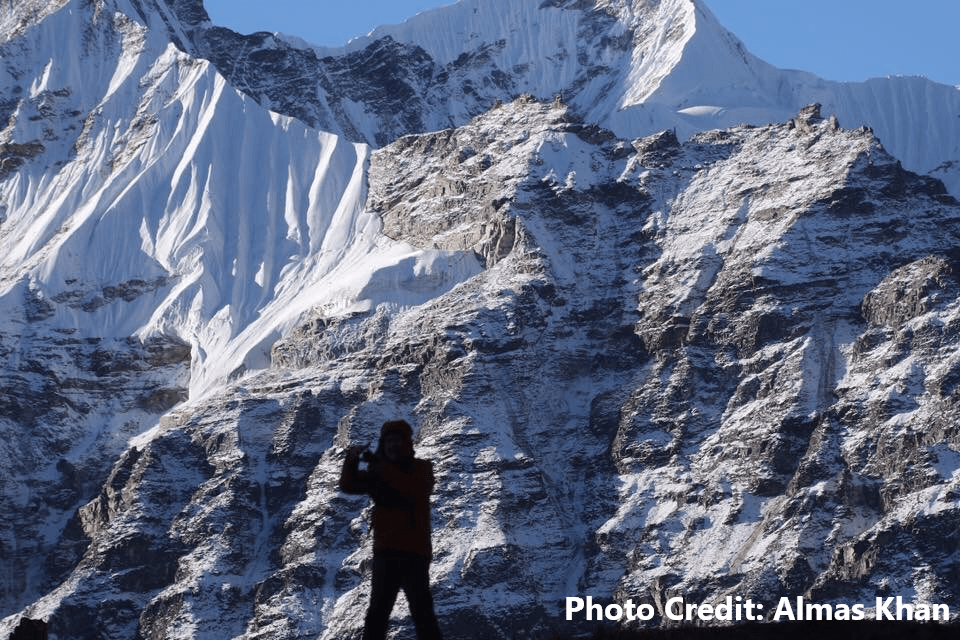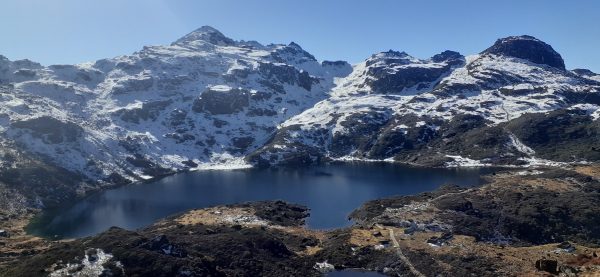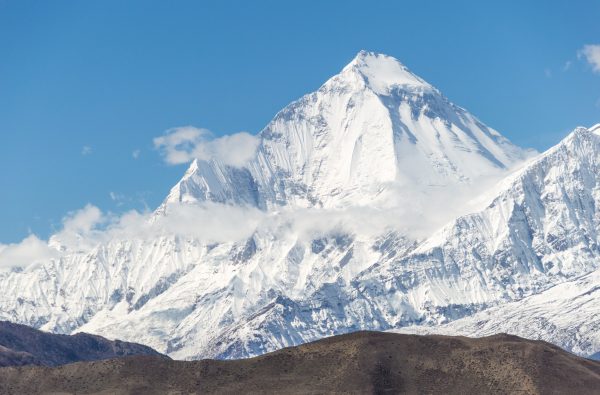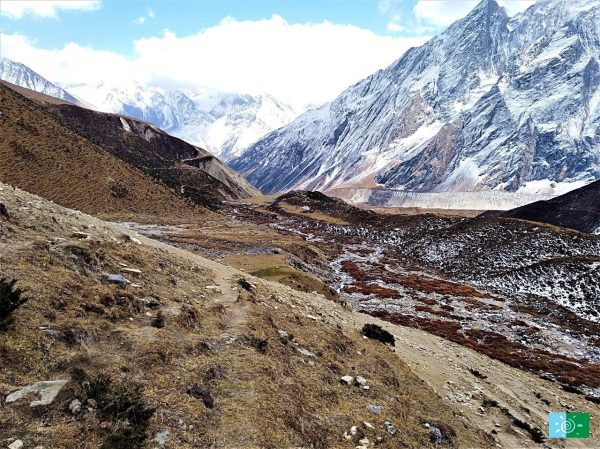About Great Himalaya Trail (GHT)
One of the great trekking “holy grails” is the route through the far-flung peaks of the entire Himalaya range, which links all the established trekking regions in Nepal.
Great Himalaya Trail is reflected as one of the highest and longest trails on the globe, and likely the most dramatic, traversing the totality of Nepal from east to west in the shades of the world’s highest mountains.
The GHT is an opportunity to experience some of the less explored, most exciting hidden corners of Nepal where you will be bump into with awe and marvel at the scale and magnificence of the land, plus the cordiality and humbleness of locals.
If you are an adventure devotee and want to discover the Himalaya and immerse into the authentic culture of local people, the Great Himalaya Trail Trekking is the perfect one. To complete this, it requires a high level of commitment and willing power.
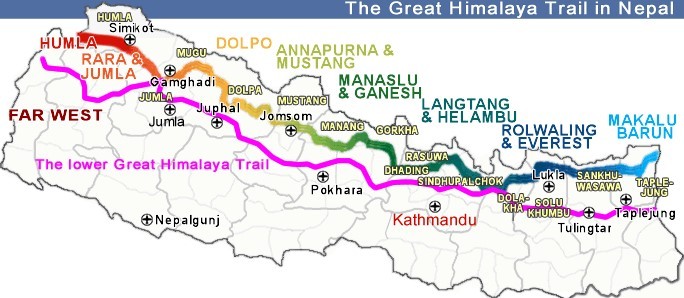
Great Himalaya Trail meanders beneath the world’s highest peaks and visits some of the most isolated communities on the globe, it passes through lush green valleys, arid high plateaus, and fantastic landscapes.
Nepal covers the 1,700 km of the Great Himalayan Trail and begins from the east border of Nepal near Kanchenjunga and goes through the northern part of Nepal comprising Kanchenjunga, Makalu, Everest Region, Langtang Region, Ganesh Himal, and Manaslu Region, Annapurna, Mustang, and Dhaulagiri and goes to the west of Nepal through Upper Dolpo and end at Darchula.
Trekking in Nepal is a key attraction for tourists, however, popular destinations have been limited to the regions of Solukhumbu, Everest, Annapurna, and Langtang. Since the trails here are well maintained and provide the opportunity to explore the Himalayas to both beginner and experienced trekkers. While the other two-thirds of Nepal’s mountain topography, generally reflected ‘off the beaten track receives less attention.
“Today trekking in the Himalayas has become very popular however almost all the trekkers go to just a handful of famous regions-to see Mt. Everest or to go on pilgrimage to Gangotri-and that leaves the other 95% of the wide Himal relatively untouched by trekkers and mountaineers, and it means that the local people in those unfrequented areas do not benefit from the flows of tourism”– Peter Hillary; The Great Himalayan Trail –Pictorial Guide Second Edition
The Great Himalaya Trail hence created a trekking route that crosses both famous areas and other lesser-known places (relatively poor but with huge tourism potential). The trail also links all the less explored destinations together to increase awareness of these trails and bring tourism to the more isolated and less trodden parts of Nepal. The trail was proposed in an effort to boost tourism in some of the relatively unknown and off-the-beaten areas of Nepal.
As an active partner and member of Great Himalaya Trail (GHT) and Travelife Certified Company, Nepal Sanctuary Treks offers varied itineraries based on GHT the off-the-beaten trails to promote sustainable tourism.
Let’s Explore the Himalayas and immerse ourselves in the authentic culture of local people
Nepal’s Great Himalayan Trail (GHT) officially opened in 2011 and the trail is divided into 10 sections comprising a linkage of upper and lower routes. Each offers different challenges and opportunities and has its own unique combination of remarkable Himalayas scenery and authentic cultural experience. Each GHT section provides a separately marketable trek along the main and cultural path of the GHT of 2-3 weeks in length. Furthermore, there are numerous side treks; some short, some long, some teahouse-style, some camping treks
With such an extensive range of interlinking routes, there are numerous choices for trekkers – either the ‘High Route’ (also known as the Extreme Route) or the ‘Low Route’ (also known as the Cultural Route). The upper route and lower route consume 150 and 99 days respectively.
Locals often state to them as the mountain route and cultural route. Whilst the trekkers might choose to do one or the other, or a combination of both.
The high route and low route are more like guidelines than official routes. There are hundreds of routes throughout the Himalayas. As the maps state, “Every trail is the trail.”
High Route
The high route meandering through High Mountain ranges stretches over a distance of about 1,700 km (1,056 miles). The route is on an average altitude of 3,000 to 5,000 meters.
The trail leads in the shadows of the world’s highest peaks, traversing its way over High Mountain passes, windswept plateaus, lush valleys, and incredible landscapes while visiting some of the most far-flung hamlets on the globe, where the life of people have not been touched by modern civilization. Untouched by modernity, people still adhere to their traditional life and culture.
Thus, incredible views, adventure trekking, unspoiled culture, trans-Himalayan backdrop, and alpine valleys are the main highlights of the GHT route. It may take up to 150 days on average to complete high-route treks.
The trekkers who want to embark on the high route trekker must be physically fit with sound health and, ideally, possess some trekking experience; since the trekking involves crossing several high passes and trekking through remote trails. Additionally, the trekkers must prepare proper trekking gear and mountaineering equipment.
Several areas of GHT particularly high routes traverse through the restricted areas where you require permits.
Low Route
The low route is regarded as easy and is generally well-known as a cultural trek, hence it is shorter than the high route. The low route expands the distance to about 1,500 km (952 miles) and takes about 100 days to complete the whole trek. And the route winds through Nepal’s mid-hills, with an average elevation of 2,000 m.
The route usually comprises stunning lush forests, green rice terraces, and several authentic Nepalese villages of diverse cultures. Additionally, it is often deliberated as the cultural route, hereafter trekkers get an opportunity to visit small hamlets and get insight into the culture and traditions of Nepal’s various ethnic groups.
The Low Route on the Great Himalaya Trail is far easier, as the average elevation is 2,000 meters. The temperatures are usually warmer and there are not any issues of altitude sickness.
The Great Himalaya Trail A Pictorial Guide II Edition
Robin Boustead, an Australian who has been trekking the Himalaya for over two decades, is a modern GHT pioneer. He walked the Great Himalaya route for the first time in 2008 and 2009 with his team (Pema Tsering Sherpa, Lakpa Sherpa, and Karma Sherpa) and successfully completed in 157 days.
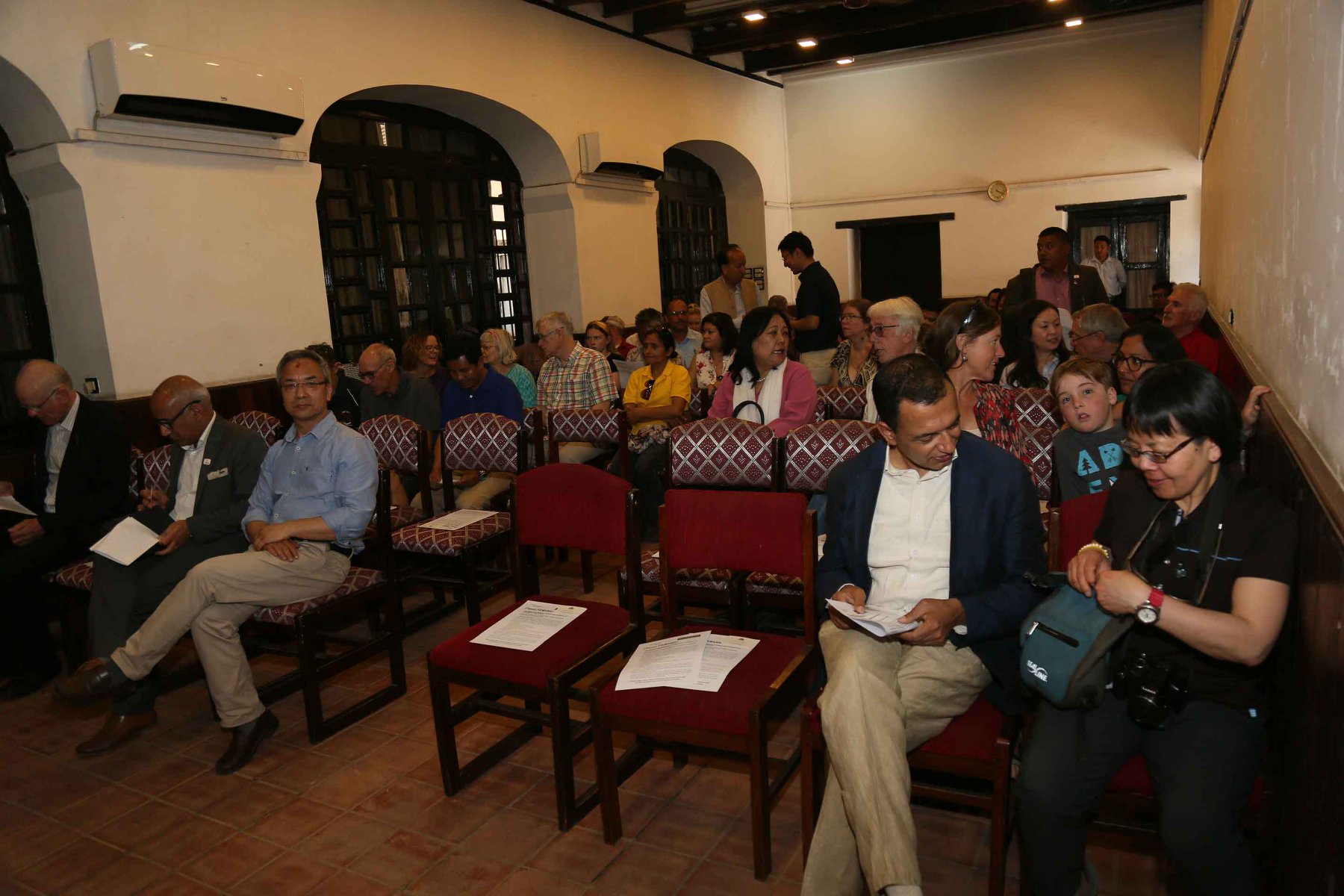
After the successful publication of his first edition of “The Great Himalaya Trail: A Pictorial Guide”, his second edition launched on April 17, 2019. This pictorial guide encompasses the most well-known routes along with the Nepal Himalaya ranges and some less explored locations. The book is expected to update visitors about Nepal’s geographical and environmental conditions, targeting Visit Nepal 2020.
He uses stunning pictures, the first interlinked sequence of trekking maps for every mountain region, showing the GHT and connecting major trails. This book has a foreword by Peter Edmund Hillary, son of the legendary Sir Edmund Hillary.
Peter’s first summit of Everest in 1990 meant Hillary became the “first family” of Himalayan mountaineering, with two generations of Everest climbers to conquer the feat. He ascent it again in 2002 to celebrate his father’s first ascent.
Peter Hillary has followed in his father’s footsteps beyond just mountaineering. Edmund and the Hillary family have built and run 42 schools, hospitals, and medical clinics for the mountain people of the Solu Khumbu district. At present, there are Himalayan Foundations in six countries to support this work, and Peter Hillary is a board member, fund-raiser, and regular Nepal visitor to carry on this commitment to support the people of rural communities.
He has recently undertaken the trek with his family called “In Hillary’s Footsteps trek to Everest Base Camp” in April 2019.
Promoting Sustainability
Responsible tourism concerns in Nepal are determined by poverty, a lack of education, and simple inefficiency when it comes to infrastructure
The Government of Nepal is now taking consideration in promoting the trail and its sections as a way to bring socio-economic benefits to the people of rural communities. To make this happen, the Great Himalayan Trail focused on promoting “responsible tourism” best practices. This would definitely help to improve local employment and boost demand for locally-produced goods and services at the destinations.
According to Robin Boustead in his book “The Great Himalayan Trail: Pictorial Guide Second Edition
“The long-term goal for the GHT is to see sustainable tourism development along the trail to benefit communities that are too remote for major infrastructure development. Further, by creating value in regions that were thought to have little to offer, he hopes that government will cooperate to create a transboundary corridor for animal migration. This would reduce illegal hunting and help save many endangered species”
Nepal Sanctuary Treks is listed on GHT site and is committed to supporting responsible and sustainable tourism.
Want to know more about Great Himalayan Trail?
Thus, undertaking one of the GHT treks will help to improve the socio-economic condition of isolated communities and employ porters and guides from various regions. In addition, purchasing local food, and handicrafts and staying at local teahouses would help in poverty alleviation and the resilience of local communities.

